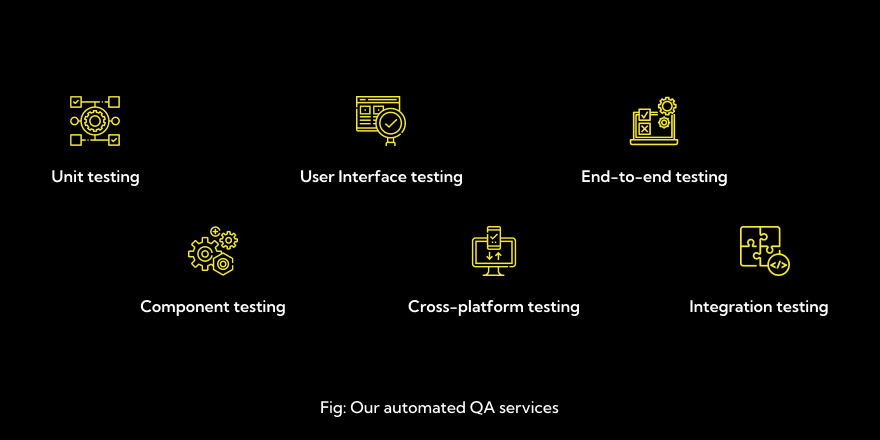Offices: Gurgaon, Jaipur, Indore, London, Dubai, Sweden
Striking the QA Balance

In the ever-evolving landscape of software development, quality assurance (QA) holds a pivotal role in ensuring that the final product meets the highest standards of performance, functionality, and user satisfaction. As technology continues to advance, the QA process has also undergone a transformation, giving rise to a crucial debate: Manual Testing vs. Automated Testing. At FiftyFive Technologies, we understand the significance of this dilemma and the impact it has on delivering top-notch software solutions to our clients. In this blog, we delve into the pros and cons of both manual and automated testing to help you navigate this complex decision.
Manual Testing: the human touch
Manual testing, as the name suggests, involves human testers conducting test cases and scenarios manually, without resorting to automation tools. Despite the prevalence of automated testing solutions, manual testing maintains its relevance and offers a diverse set of advantages. Human testers bring forth a unique blend of flexibility and intuition, enabling them to replicate real-world user interactions and thoroughly explore every aspect of an application. This approach proves invaluable in uncovering unexpected issues that automated scripts might overlook.
Furthermore, manual testing allows testers to subjectively evaluate usability and user experience, assessing elements like user interface design, responsiveness, and overall ease of use. The early testing capabilities of manual testing are noteworthy, as it can be initiated even in the absence of a stable product, facilitating prompt bug detection and supporting agile development practices. The prowess of human testers truly shines in exploratory testing, where their creative navigation through the software uncovers issues that predefined test cases may fail to detect.
However, it’s important to acknowledge the limitations of manual testing, including its susceptibility to human errors, potential time and cost intensiveness—especially for complex projects—and the challenge of achieving comprehensive coverage across the vast landscape of modern applications.
Automated Testing: speed and efficiency
Automated testing streamlines the testing process through the utilization of tools and scripts, minimizing the need for constant human intervention. This approach boasts several noteworthy advantages: accelerated speed and efficiency in executing numerous test cases and repetitive tasks, consistent and precise execution of identical test scenarios to mitigate human errors, suitability for repetitive regression testing to safeguard existing functionalities from new code changes, and the ability to cover a broader spectrum of scenarios, ensuring comprehensive testing that surpasses the feasibility of manual methods.

Yet, automated testing comes with its own set of challenges. The inception demands a substantial investment of time and resources, elevating the initial setup expenses in contrast to manual testing. Maintenance emerges as a persistent concern, with automated tests necessitating ongoing adjustments to align with evolving application changes, potentially consuming valuable time. Furthermore, the realm of human intuition and creative prowess, exemplified by exploratory testing, remains a domain where automated tests often encounter limitations.
Blending the hybrid approach
Recognizing the strengths of both manual and automated testing, many organizations, including FiftyFive Technologies, opt for a hybrid approach. This strategy combines the human intuition of manual testing with the efficiency of automated testing. Critical, high-priority test cases can be manually tested, while repetitive and time-consuming tests can be automated to achieve a balance between thoroughness and speed.
Why choose us?
The choice between manual testing and automated testing is not a one-size-fits-all decision. Each approach has its own advantages and drawbacks, and the decision should be based on factors like project size, complexity, budget, and timeline. At FiftyFive Technologies, we understand that the QA dilemma is nuanced, and our experienced teams tailor their testing strategies to suit the unique needs of each project. By embracing the strengths of both manual and automated testing, we deliver superior software solutions that exceed client expectations and stand the test of time.
Our QA processes and software testing approaches are based on the best practices, market-defining tools, and invaluable expertise gained through the years of developing successful digital products. We are a software QA services company with a focus on making your life easier, project successful, and development faster and cheaper.
Start a project, contact sales.
Recent Posts
Wish to live a culture beyond tech ?
Quick links
Contact
-
INDIA
-
-
-
37B - Thinkvalley , Sector 32 - Gurgaon Haryana - 122002
-
J-2, Jhalana Institutional Area, Jhalana Doongri, Jaipur, Rajasthan 302004
-
Incuspaze Co-Work, 208, 2nd Floor, Apollo Premier, Vijaynagar Square, Indore (MP) 452010
Locations
-
UK
-
-
-
Wework, 33 Queen Street, London, England, EC4R 1AP
-
FZCO IFZA Business Park, Dubai Digital Park, Dubai Silicon Oasis, Dubai, United Arab Emirates
-
Herrgardsvagen 12 A 135 53 TYRESO Sweden
© All Copyright 2022 by FIFTYFIVE TECHNOLOGIES


